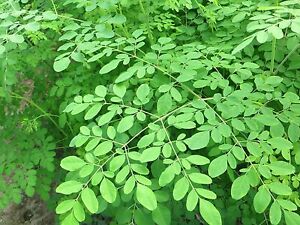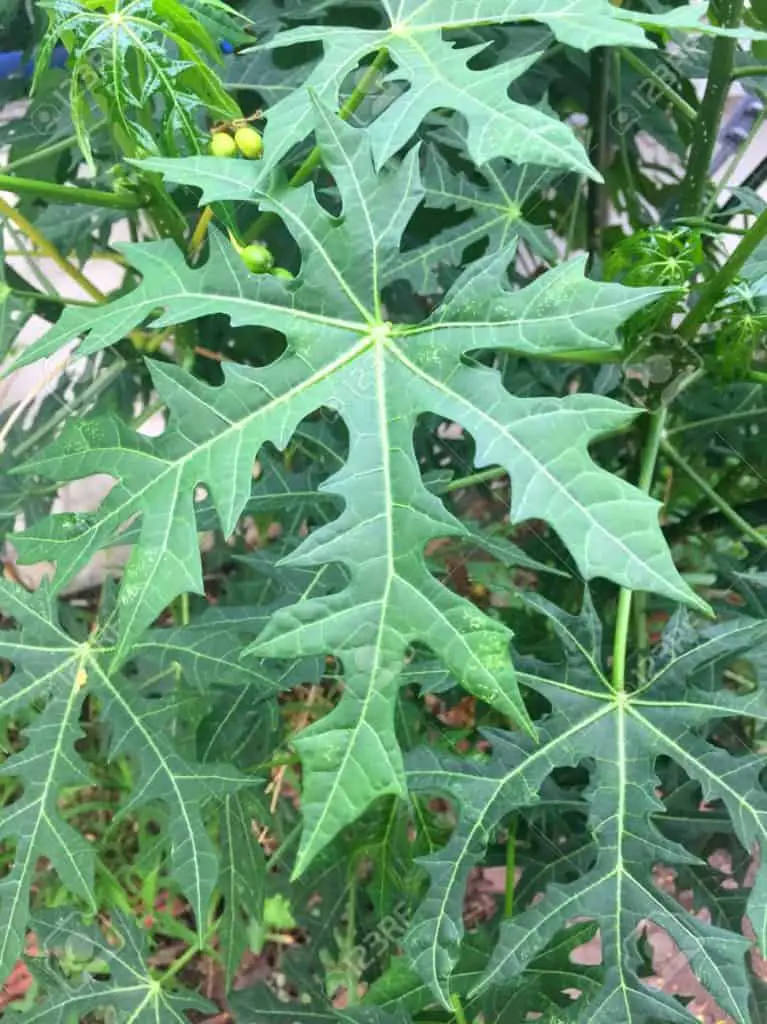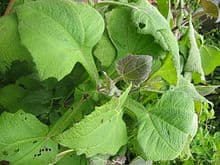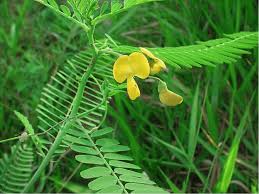The great thing about living in Hawai’i is that food crops grow all year here. We are especially lucky that we have a wide range of edible plants that are perennial in our tropical climate. No more need to have to replant every year? Sign me up!
I used to work as a farmer at several market gardens across the US. Market gardens specialize in growing fresh produce such as lettuce, tomatoes, cucumbers, etc. Let me tell you, growing annual vegetables is a lot of work. Tilling, weeding, planting, harvesting, clearing beds, tilling, etc.
That led me to think of what would be an easier way to grow food for a lazy gardener like me? The answer came in the form of Perennial Edibles. Fruit trees and perennial vegetables take a lot less work than the crops in a market garden. They can create a stable food source to increase your resiliency while also cutting your input.
One of the most important things to consider about growing perennial vegetables is that for most of us, it’s going to take a drastic change in our diet. That can be hard. I’d advise slowly incorporating them into your diet, replacing spinach for sweet potato shoots or the typical green bean with a perennial wing bean.
As our palates and cooking skills grow, we will find these perennial vegetables to be just as good, if not better than many of their annual counterparts. This is tropical gardening folks. The land is not meant to be tilled every season. Grow perennials and thrive.
Related: Whether you’re needing a garden fork to prepare a bed for planting kalo or you need an easy way to harvest your potatoes, this garden fork from Amazon is the best one that I ever came across. It is great at breaking up soil!
The Best Perennial Vegetables for Hawaii
| COMMON NAME | LATIN NAME | GROWTH TYPE | EDIBLE PARTS |
| Sissoo | (Alternanthera Sissoo) | Ground Cover | Leaves |
| Okinawa Spinach | (Gynura crepioides) | Ground Cover | Leaves |
| Edible Hibiscus | (Hibiscus sabdariffa) | Shrub | Leaves, Flowers |
| Chaya | (Cnidoscolus aconitifolius) | Shrub | Leaves |
| Katuk | (Sauropus androgynus) | Shrub | Leaves, Flowers, Fruit |
| Moringa | (Moringa oleifera) | Tree, but pruned to shrub | Leaves, seedpods, roots |
| Egyptian Spinach | (Corchorus olitorius) | Shrub | Leaves |
| Taro | (Colocasia esculenta) | Small Shrub | Roots, leaves |
| Sweet Potato | (Ipomoea batatas) | Ground Cover | Roots, Leaves |
| Cassava | (Manihot esculenta) | Shrub | Roots |
| Yacon | (Smallanthus sonchifolius) | Small Shrub | Root |
| Ginger | (Zingiber officinale) | Small Shrub | Root |
| Pigeon Pea | (Cajanus Cajun) | Shrub | Seed Pods, Seeds |
| Winged Bean | (Psophocarpus tetragonolobus) | Vine | Seed Pods, Roots |
| Lima Bean | (Phaseolus lunatus) | Vine | Seeds |
| Sesbania | (Sesbania grandiflora) | Understory Tree | Leaves, Seedpods |
| Green papaya | Understory Tree | Fruit | |
| Plantain | Musa | Understory Tree | Fruit |
| Hawaiian Chilli Pepper | Shrub | Fruit |
PERENNIAL LEAFY VEGETABLES

Sissoo (Alternanthera Sissoo) –aka Brazilian Spinach is an edible groundcover that prefers 50% shade. It has tender leaves that are not slimy, which can be eaten raw or cooked, making it a great substitute for annual spinach .
Sissoo is propagated by branch cutting and does really well on the windward side of the islands by just sticking them straight into the ground. Sissoo makes an awesome ground cover for fruit trees, making them a great addition to your food forest.

- Okinawa Spinach (Gynura crepioides) – A beautiful edible leaf ground cover that has green leaves on the top and a beautiful shade of purple on the underside. Don’t let the name of this plant fool you, it is native to Indonesia.
The leaves have a piney taste and are best eaten raw or lightly cooked. If it cooks too long it can get slimy. It grows well in most soils, requires a moderate amount of water and is relatively pest free. It is a great addition to any home garden.

- Edible Hibiscus (Hibiscus sabdariffa) – There are so many varieties of Hibiscus with many of them being edible. The Hibiscus Sabdariffa aka Cranberry Hibiscus or Roselle has edible leaves, flowers and calyxes that are traditional made into a medicinal tea.
The plant has green leaves with reddish stems, producing dark red calyxes and colorful yellow flowers. This plant grows as a shrub and can easily be grown by cutting or seed.
False Roselle (Hibiscus Acetosella) – Another hibiscus common in many Hawaiian garden. This plant is all red, flowers, leaves, stems. The leaves are commonly steamed or cooked in a stir fry, but can also be eaten raw. Another great Hibiscus for the Hawaiian Garden.

- Moringa (Moringa oleifera) – Moringa is considered one of those superfood miracle plants. It grows well in the drier parts of the islands but can handle wetter climates as long as the soil is well draining. It can be propagated year round by seed or cutting.
Moringa wants to grow into a tree that can get as big as 40’, but most growers chop it back to 3’ each year to keep the greens and seedpods within arms reach.
The leaves are highly prized for their nutritional value and are usually cooked like spinach. You can also eat the seeds, immature seed pods and roots, all providing valuable nutrients and minerals.

Chaya (Cnidoscolus aconitifolius) – aka Tree Spinach, Chaya is a a fast growing shrub that gets up to 6’-8’. It is a great tree to add into the understory of a food forest as it does well in shade. I have one under a larger avocado and it is doing great!
Chaya propagates by woody stem cutting. It may take some time to get going, but after the first year its off to the races. It does well with regular pruning.
To use Chaya, harvest the young leaves and cook much like spinach. The leaves must be cooked because they contain hydrocyanic glycosides, but it only takes a minute before the leaves are safe to eat.

Katuk (Sauropus androgynus) – aka Sweetleaf Bush, Katuk is a leafy shrub that grows in the understory of tropical forests, perfect for your Hawaiian food forest. I have a few of these plants and love how easy they are to grow.
The plants grow very easily by cutting or by seed, in fact we’ve had hundreds of seedlings volunteer directly under the mother plant.
Being that this plant is native to Asia, you’ll find the leaves used in many soups and stir fries. The leaves can also be eaten raw, but in moderation, people have been known to get sick from eating too much at one time.
Related: Katuk: Easy Perennial Green for the Off Grid Homestead

Egyptian Spinach (Corchorus olitorius) – aka Molokhia, Egyptian Spinach is another fast growing shrub that LOVES heat and plenty of water. It can be grown by either seed or cutting.
It’s called Egyptian Spinach, but it doesn’t taste like spinach. It is in the mallow family and packed full of vital vitamins and minerals.
Traditionally, young leaves are harvested and then the spine is removed, chop the rest.
Use it in soups or stir fries.
- Basil – Amazingly enough, basil is pretty simple to grow in the tropics and some bush varieties are perennial. I have had a tough time growing other Mediterranean herbs, but this one never seems to fail.
You can propagate basil by seed or by cutting (if using a bush variety). It’s great for adding flavor in all sorts of dishes and the bees love it!!
PERENNIAL ROOT CROPS

Kalo – aka Taro, is believed to have the greatest life force of all foods, first born of the ancient gods Wakea and Papa. If you are to plant any crop in your Hawaiian food forest it should be this one.
Kalo is easy to grow by cutting the top inch of the root with the leaf stem intact, cut the leaves and save for cooking. Place the root cutting an inch down and bury, not too deep as this will encourage abnormal root shape. Planting in compost rich soil is best.
If you have a wetland, you can grow wetland Taro.
The root is traditionally steamed and mashed into poi. It can also be cooked like a potato, utilizing similar recipes. However, expect it to be a bit more gelatinous.
The leaves can also be eaten as a steamed green, or my favorite, as a wrap for some local pork and sweet potato, then steamed. Onolicious Laulau! I just love the smokey taste of the Kalo leaf.
Make sure you cook all parts of the Kalo to rid it of calcium oxalate crystals present in the leaves, stem and corm. Raw Kalo is sure to leave your throat itchy and raw.

Sweet Potato – If you are looking for a groundcover that kind of does it all, provides calorie rich tubers, edible greens and beautiful colors that look good in any landscape, then sweet potato is your plant. It is second only to Kalo for the traditional Hawaiians.
Sweet Potato is grown by taking cuttings and planting them 4 nodes deep into well draining soil. They can grow on rocky ground but will not produce good tubers.
The roots are ready for harvest within 4-6 months and the greens can be harvested as early as a month after transplanting. The young leaf tips are the best to be used as a spinach substitute in stir fries and soups.
To learn more about sweet potato and growing it in Hawai’i, visit this article that digs to the root of the issue.

Cassava (Manihot esculenta) – aka Yuca, this plant thrives in semi dry conditions but can grow in the wet parts of the islands as well as long as there is well draining soil. It has a starchy root that can be harvested and eaten much like potato.
To propagate cassava, you can take a stem cutting and put it 3”-4” straight into the ground or at a 45 degree angle at the beginning of the rainy season. It’s that simple. This plant could be considered the king of all staples.
Cassava is known to contain Cyanide, but fortunately for us, boiling or cooking gets the cyanide right out.

Yacon (Smallanthus sonchifolius) – Yacon is another root crop that does well in the Hawaiian garden except this tuber gets eaten raw. The root has a sweet taste compared to a cross between an apple and celery. Above ground it looks like a sunflower and below it’s all tuber.
The Yacon grows two types of tubers, larger potato like tubers that get eaten and multi bulb like tuber that is used as seed. Take the multi bulb like tuber and separate the different bulbs and plant each one into well draining soil. Within 6 months to 1 year, your roots will be ready to harvest.

Ginger (Zingiber officinale) & Tumeric (Curcuma longa) – Everyone knows Ginger and to a lesser extent it’s cousin Tumeric. These root crop grows well in Hawai’i but are susceptible to many damaging root pests.
To plant ginger or tumeric, find a well composted patch of ground and stick a tuber in it, preferably in March. 10 months of growing is what you’ll need to harvest the optimal amount of ginger or tumeric, but really, they can be planted at anytime.
These plants are mostly used as a flavor enhancer for food dishes or as a medicine. Be sure not to neglect finding a patch for ginger in your garden.
PERENNIAL NITROGEN FIXERS

- Pigeon Pea (Cajanus Cajun) – This is a great Permaculture plant that has many uses. For one it’s a nitrogen fixing shrub that can be planted in the understory of your food forest. Bees love it. The seed pods taste like peas. Animals love the leaves and edible pods. And it’s a great mulch plant.
To grow pigeon pea, simply place a seed ½” into the ground and before too long it will be growing into a nice looking shrub. It can be grown as a companion plant or on it’s own as a living hedge.

- Winged Bean (Psophocarpus tetragonolobus) – Another easy to grow edible perennial that loves the humid climates of windward Hawai’i. This nitrogen fixer grows as a vine in poor soils. Not only can you eat the young bean pods, but the roots are edible as well!
To grow winged bean, simple scarify the seed and soak them in water for 24hr and plant them directly into the ground. Within 7-10 days you should begin to see sprouts.
This plant can grow well without a trellis, but provides more of the edible bean pods when trellised. It is a great plant to grow in an otherwise overcrowded garden.
Related:

- Lima Bean (Phaseolus lunatus) – aka Madagascar Bean, This is a fast growing perennial vine that produces some tasty beans. It needs some strong trellising to grow. I used to grow perennial Lima Bean on a bamboo arbor in the garden. This plant lives up to 7 years.
These plants grow easy from seed. They grow in all types of soil and are super hardy and low maintenance. It is said that all parts of the plant are edible, but I’ve just eaten the beans.
The beans pack a high amount of protein, making them a suitable replacement for animal proteins in the vegetarian diet. They also provide a lot of mulch material that helps feed the garden.

- Sesbania (Sesbania grandiflora) – Sesbania is a low growing tree that is grown throughout the tropics mainly as a nurse tree for other more desirable crops. However, the leaves and young seed pods of this plant are edible and used in many asian dishes.
The plant is easy to grow by seed or cutting and thrives in poor soil. I haven’t heard too much about this plant growing in Hawai’i but it has been done.
Related: Hawai’i Food Forest: Feed Your Garden With Nitrogen Fixing Plants
PERENNIAL FRUIT CROPS THAT ARE USED LIKE VEGETABLES
- Green Papaya – The great thing about this is if you are already growing papaya, you have green papaya that you can use for cooking or making salads. All you have to do is harvest the young, immature green fruit to use in your cooking.
Papaya is grown from seed. All I do is take a papaya that I like, save the seeds and pour them all into a shallow hole in the ground. Normally I get a lot of sprouts this way, I just thin them out and they are off to the races.
Papayas normally don’t like to be transplanted, so planting direct is your best option.

- Cooking Banana – aka Plantains, My favorite bananas are cooking bananas. The best varieties for Hawai’i are Largo, Maia maole, and Popoulu, but you can cook with any immature banana.
To grow banana, separate a young shoot from the parent plant and transplant direct into the soil, preferably on a full moon night. Bananas are heavy feeders, so be sure to prepare the hole with a lot of rich compost and continue to add fertilizer throughout the growing season.

- Hawaiian Chili Pepper – The Hawaiian Chili Pepper thrives in windward soils. This plant grows great from seed but is usually transplanted from a nursery purchased plant. It can grow for many years and is very prolific.
If you like spicy foods or are looking for a plant that can offer pest control, then give the Hawaiian pepper plant a place in your garden.
Homesteadinhawaii.com is a participant in the Amazon Services LLC Associates Program, an affiliate advertising program designed to provide a means for sites to earn advertising fees by advertising and linking to Amazon.com. This site also participates in other affiliate programs and is compensated for referring traffic and business to these companies.
